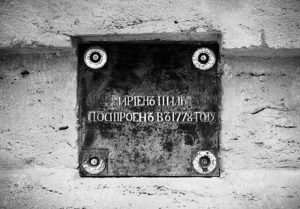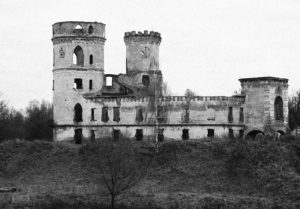Castle BIP, also known as Paul’s Fortress or Bastion of the Emperor Paul, was built during the years 1795 to 1797 by the architect C. F. Brenna by order of Emperor Paul I, on the place of the small “Marienthal” Palace.
Prior to the castle’s construction, the area was occupied by the remnants of a Swedish Outpost built by the Swedish General Cronhjort in 1702. A memorial plaque at the entrance of BIP Castle commemorates this outpost.
Soon after his ascension to the throne, Emperor Paul I issued a decree allocating 6,100 rubles for the construction of Paul’s Fortress, which was supervised by architect D. Quadri.
The castle consisted of a two-storey pentagonal building with a courtyard and two oval towers. The building was surrounded by fortifications constructed under the supervision of a military engineer Caus, including bastions, ravelins, lunettes and flushes. The castle was also equipped with 28 guns.
On April 19, 1798, Castle BIP was ranked by the St. Petersburg Engineering Department and, thus, was included in the military registry of fortresses of the Russian Empire. There was a military garrison here, regular service was established, the guns fired at noon and the drawbridge was raised at sunset. In the basement, the castle had its own guardhouse for military personnel who committed an offense.
On June 15, 1811, the castle was expelled from the Engineering Department. From 1807-1810, the castle served as the first Russian School for the deaf.
In 1827, the castle was renovated , after which it was adapted to accommodating a handicap team. In 1833-34, there was an infirmary of the Exemplary cavalry regiment, then since 1835 – Alexander educational institution. Since 1851 – different offices, a parish school, 1905 – three classes City College.
After the October revolution, the castle was occupied by the Board of Deputies. Then from 20 to 23 October 1919, it was the headquarters of General Yudenich. From the mid-1920s to 1941, the castle was an orphanage, then a bank, a recruitment office and other warehouses.
During World War II, the castle burned to the ground during the Soviet offensive of 1944. Until recently, it was completely neglected as a romantic ruin on the outskirts of once glorious Pavlovsk.




